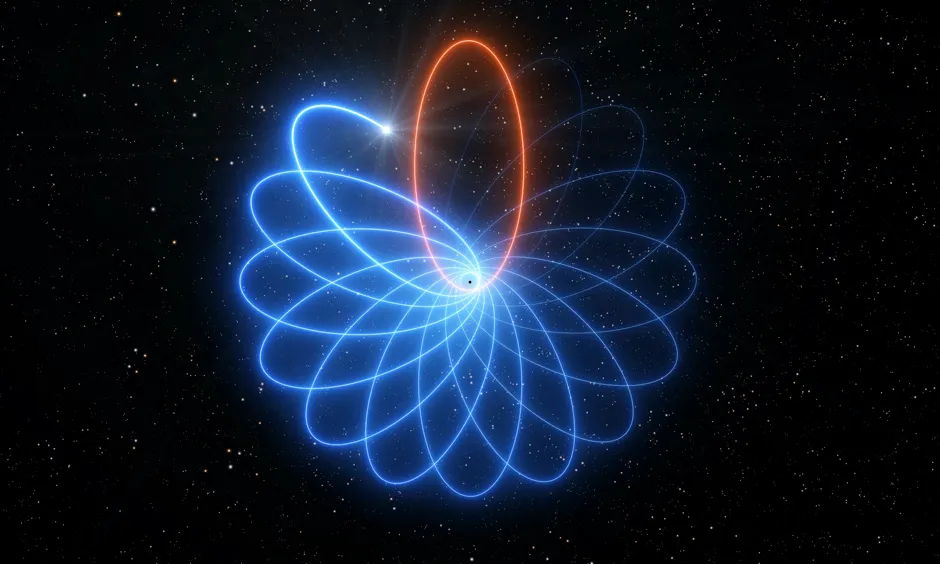A star orbiting a supermassive black hole at the heart of the Milky Way moves in a way that was predicted by physicist Albert Einstein more than a century ago, astronomers have found.
The orbit of the star, called S2, is shaped like a rosette, which is supported by Einstein’s General Theory of Relativity.
S2 orbits the supermassive black hole Sagittarius A*, which is 26,000 light years from the Sun, once every 16 years.
The findings, published in the journal Astronomy & Astrophysics, are a result of 27 years of observations of the star using a range of instruments, including the European Space Observatory’s Very Large Telescope, located in the Atacama Desert in Chile.
Reinhard Genzel, a director at the Max Planck Institute for Extraterrestrial Physics (MPE) in Germany and the architect of the programme, said the first evidence of General Relativity was seen in the orbit of Mercury around the Sun.
He added: “One hundred years later we have now detected the same effect in the motion of a star orbiting the compact radio source Sagittarius A* at the centre of the Milky Way.
Read more stories about black holes:
- Mysterious objects discovered orbiting our supermassive black hole
- Dr Becky Smethurst: How do you actually find a black hole?
- Supermassive black holes may not be as massive as we thought
“This observational breakthrough strengthens the evidence that Sagittarius A* must be a supermassive black hole of four million times the mass of the Sun.”
At its closest, S2 is less than 20 billion kilometres away from Sagittarius A*, around 120 times the distance between the Earth and the Sun. This makes S2 one of the closest stars ever found in orbit around the enormous giant.
As it orbits Sagittarius A*, the star follows an ellipse but the point of closest approach to the black hole does not always occur at the same place.

Instead, it slowly moves around the supermassive object, creating a rosette shape. This rotation of the orbit is called a precession.
General Relativity provides a precise prediction of how much this orbit changes and, according to the scientists, the measurements from their current research exactly match the theory.
This phenomenon, known as Schwarzschild precession, had never before been measured for a star orbiting a supermassive black hole.
The researchers believe their findings could help unlock the mysteries of supermassive black holes.
Guy Perrin and Karine Perraut, the French lead scientists on the project, said: “Because the S2 measurements follow general relativity so well, we can set stringent limits on how much invisible material, such as distributed dark matter or possible smaller black holes, is present around Sagittarius A*.
“This is of great interest for understanding the formation and evolution of supermassive black holes.”
Reader Q&A: Do black holes collapse?
Asked by: Patricia Rodrigues, King’s Lynn
The Schwarzschild radius (event horizon) of a black hole is sometimes thought of as the black hole’s ‘size’. It is proportional to mass, which means that more massive black holes have bigger Schwarzschild radii.
Left alone, black holes lose mass due to ‘Hawking radiation’, so that their event horizons are slowly shrinking. A typical black hole would take many billions of times the age of the Universe to completely ‘evaporate’ and disappear.
But, the interior of the black hole, or its ‘singularity’ (the point at which all the black hole’s matter is concentrated) has already reached the limit of its density and cannot ‘collapse’ any further.
Read more:
